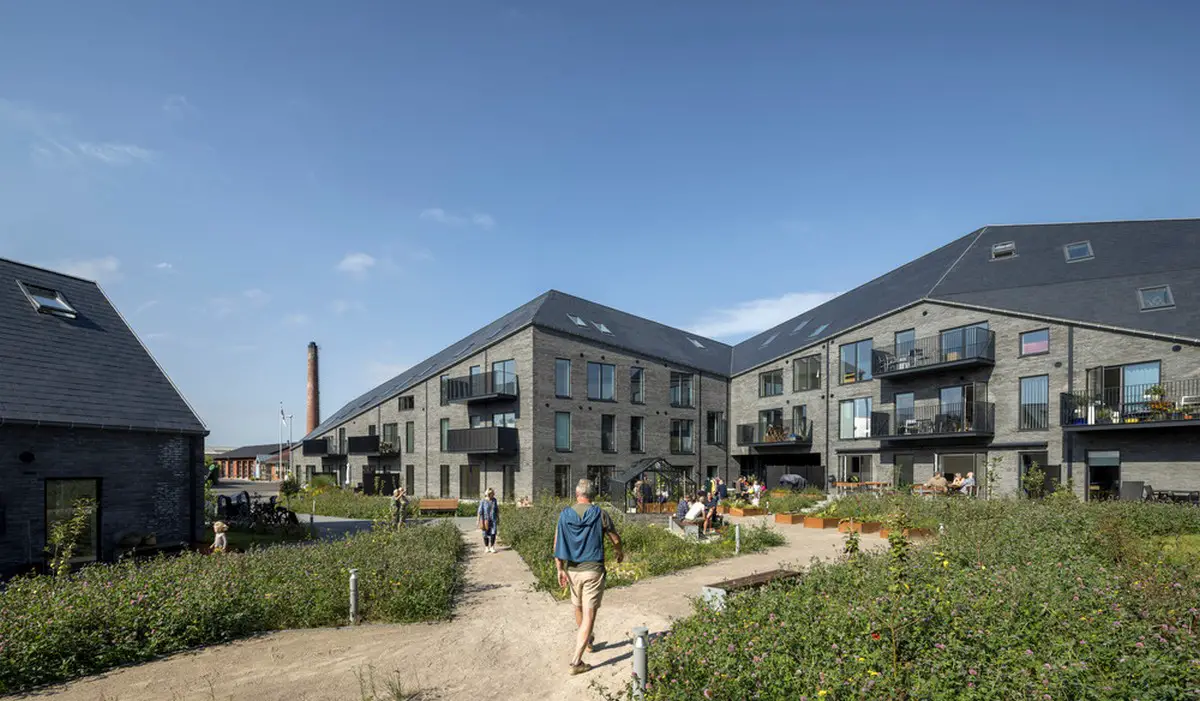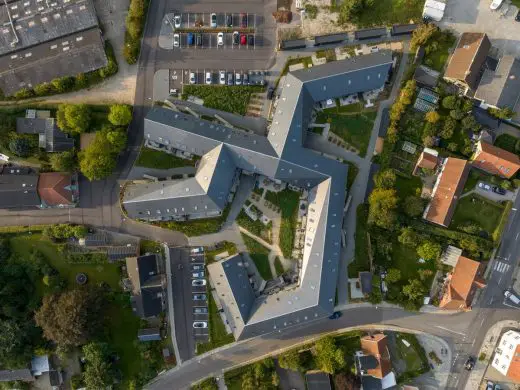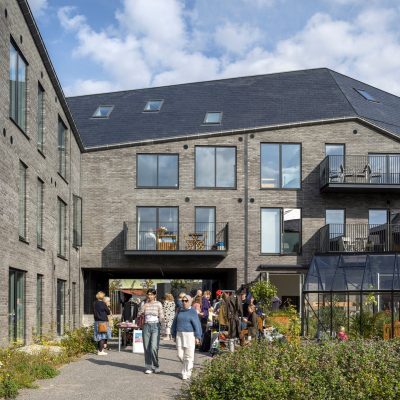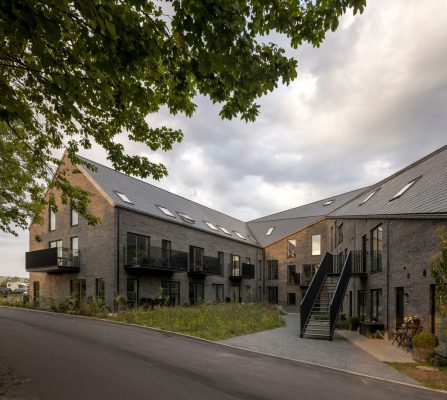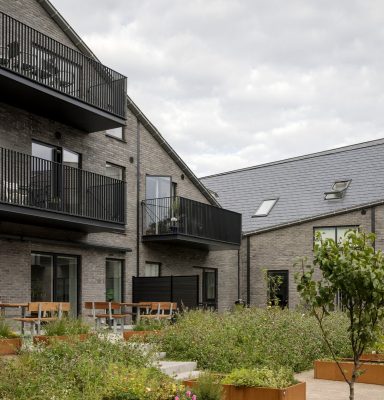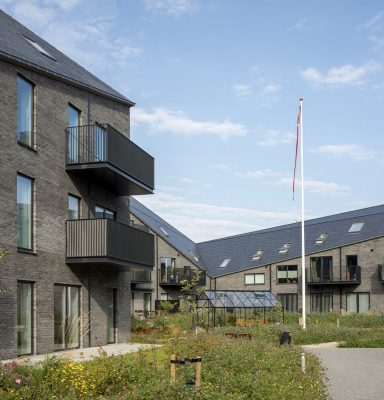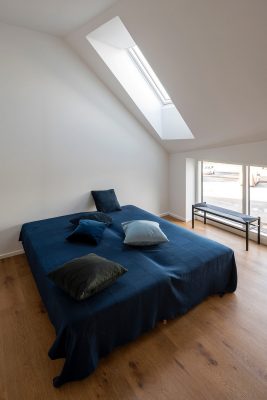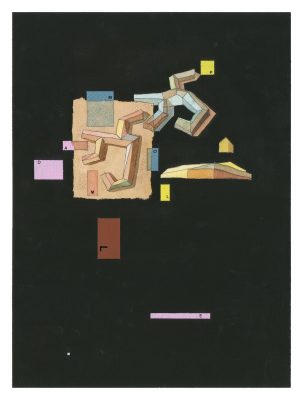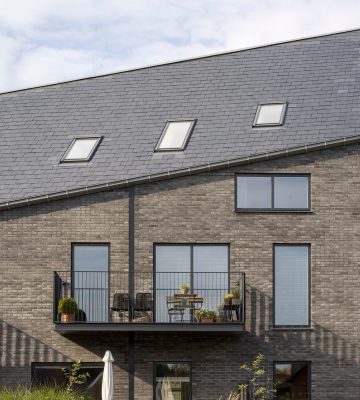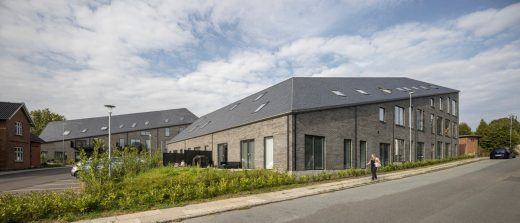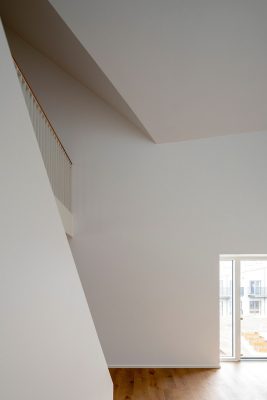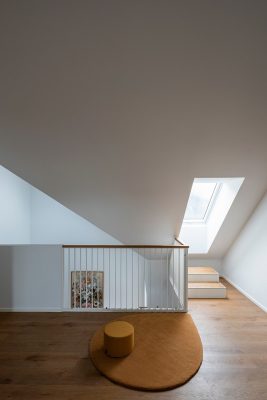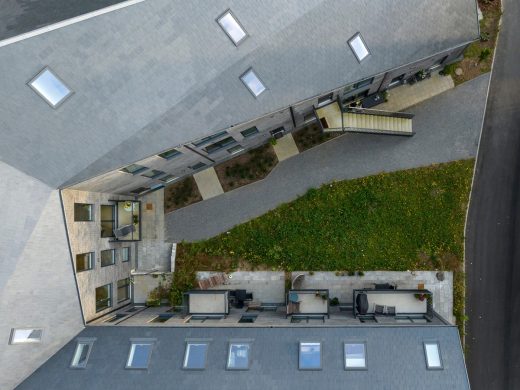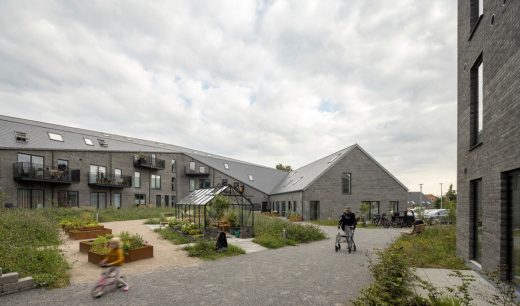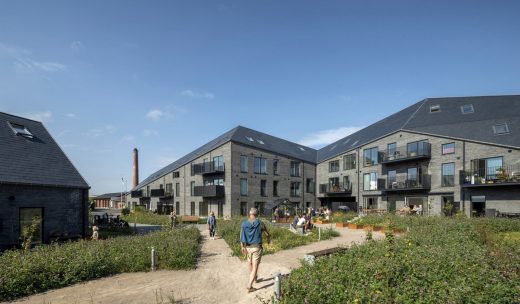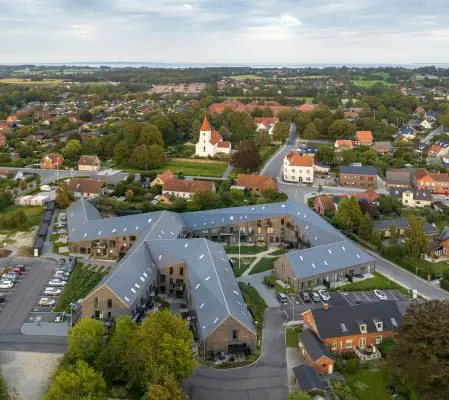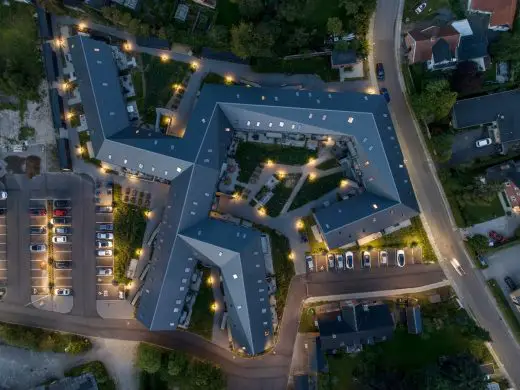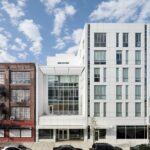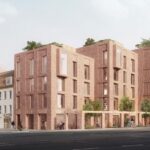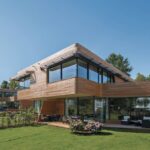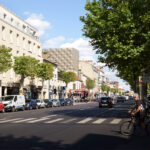Steam Mill Apartments Malling, Aarhus housing, Danish residential buildings, DK property photos
Steam Mill Apartments in Aarhus
7 July 2024
Architects: CEBRA
Location: Malling, Århus, Jutland, Denmark
Photos by Adam Mørk and Mikkel Frost
Steam Mill Apartments, Denmark
The former Steam Mill site has been reborn as new housing community with an architectural nod to the heritage of the local area Malling, Denmark.
Malling is a small and typical Danish market town located by the railway running through Jutland and connects to Aarhus. On the historical site, which used to accommodate the Malling Dampmølle steam mill (Malling Steam Mill) in the nineteenth century, CEBRA was commissioned to design a small housing community, right between the station and the local church of the suburban satellite town.
The housing project, named after the historical site, comprises 52 dwellings and is located between two primary roads in Malling: Gammel Østergårdsvej and Holmskovvej. Along Gammel Østergårdsvej, which connects the city’s main street with the station, Malling Dampmølle rises with a distinctive façade that spans from one floor towards the station, to three floors towards Bredgade. Towards Holmskovvej, Malling Dampmølle appears as a coherent building complex, withdrawn from the road to minimize traffic noise.
The geometry creates intimate environments
The housing complex is a variation of the terraced house typology designed around three central courtyards creating a sculptural form. The yards open towards the surroundings as the wings radiate out from the centre of the plot to create an irregular star plan, shaped by the oblique angles of the site perimeter. Thus, the three courtyards form a series of small private environments for the residents, while the shape articulates the historical context of the former steam mill area.
Based on the project’s urban context and a thorough analysis of the daylight conditions on site, the project’s main thrust was born. By “pulling” the roof surface up and down, the volume rises only towards the centre of the site to not cast shadows on the adjacent private garden. Based on the same logic, only the gables of the building come near the site boundary, making it appear small and less intruding to the nearby neighbours.
In addition to scaling down the building volume, the enclosed spaces offer intimate outdoor environments and a protected buffer zone between the privacy of the homes and the public streets framing the development.
A distinct interpretation of the urban fabric
The idiom of the project finds its inspiration in the urban context – both in materials and scale. The urban fabric consists of small and mostly detached brick houses, which occasionally connect to form actual street facades. Thus, traditional roof pitches made from shale and brick facades make Malling Dampmølle a contemporary interpretation of the surrounding buildings.
The housing complex is constructed using traditional, robust materials, which have a very long lifespan and require minimal maintenance. The exterior walls are made of dark bricks with dyed joints, roofs of natural slate with zinc flashings and gutters. Capping and window ledges are presented in lacquered aluminium, while windows and doors are made of wood on the inside and lacquered aluminium on the outside. Roofs and facades are kept in the same dark shade and with minimal detailing, so the entire development is experienced as one cohesive sculpture.
Voluntary community
Malling Dampmølle functions as a modern and voluntary community featuring a communal house, guest apartment, shared greenhouse, and kitchen gardens, which residents can participate in as they see fit. The shape of the roof made it possible to design a great variety of different housing units in plan and geometry, supporting and attracting social diversity with a mix of older and younger families with children, which is key to sustaining any well-functioning community. The housing units include single-storey homes with direct access to gardens and staircases, and two-storey terraced houses with direct access at the first-floor level, while one of the terraced houses is single-storey. All units feature balconies overlooking a communal courtyard.
Steam Mill Apartments in Aarhus, Jutland – Building Information
Architect: CEBRA – https://cebraarchitecture.dk/work/
Location: Malling, Aarhus, Denmark
Size: 5,600 sqm
Client: Urbanus ApS
Function: Housing
Completion: 2023
Architect: CEBRA
Turnkey Contractor: CJ-Group
Engineer: Arne Elkjær
About CEBRA
CEBRA is a Danish architecture and design practice founded in 2001 by architects Mikkel Frost, Carsten Primdahl, and Kolja Nielsen, who heads the studio’s creative work and strategic development with partner Mikkel Schlesinger. With a growing international portfolio of recognized projects, CEBRA employs a multidisciplinary staff of more than 65 employees working from offices in Aarhus and Copenhagen.
Steam Mill Apartments, Malling, Aarhus Housing images / information received 070724 from v2com newswire
Location: Malling, Aarhus, Jylland, Danmark, northern Europe
Architecture in Denmark
Jutland Architectural Projects
Aarhus Architecture Walking Tours
Aarhus Buildings
Aarhus Architectural Designs – Selection
School of Business and Social Sciences at Aarhus University
Design: AART
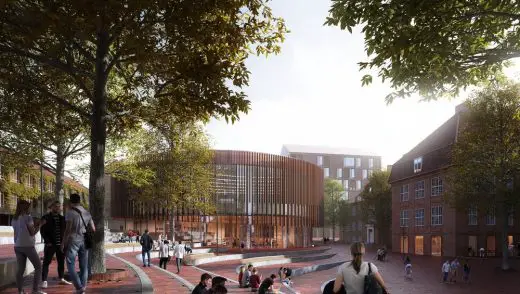
image from architect practice
School of Business and Social Sciences, Aarhus University
Urban Mediaspace Aarhus
Design: SHL Architects
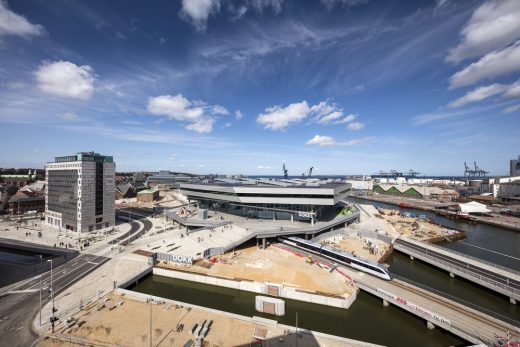
image from architects studio
Dokk1 Aarhus
Viby Syd office & community centre
Design: AART, Architects with LYTT Architecture (landscape architect) and Moe
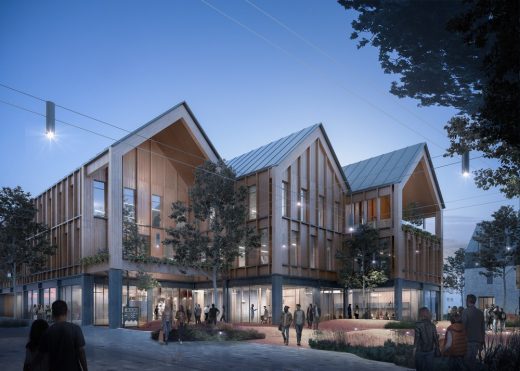
image from architecture office
Viby Syd office & community centre
Comments / photos for the Steam Mill Apartments, Malling, Aarhus Housing design by CEBRA Architects page welcome

